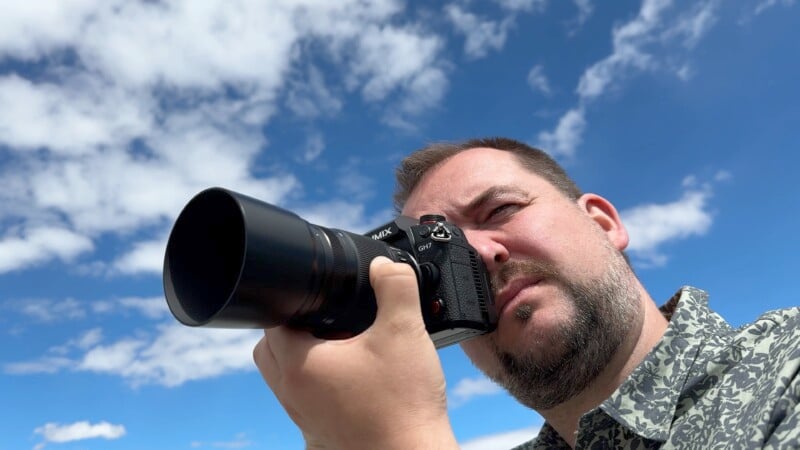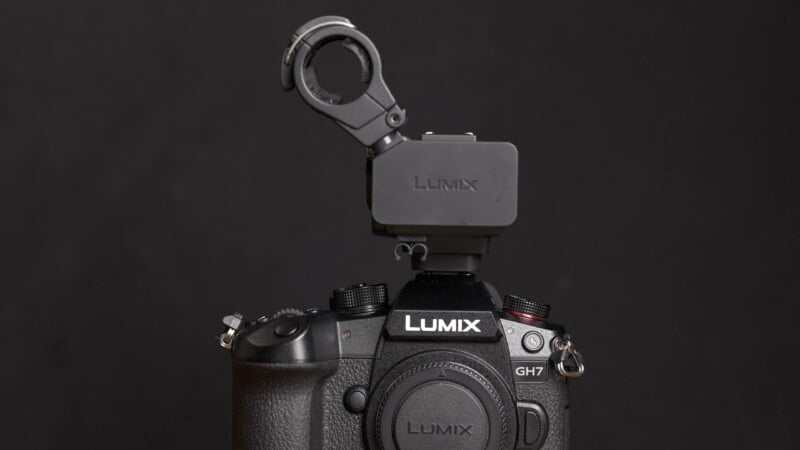Panasonic Lumix GH7 Initial Review: Sensor Size is the Only Compromise
The Panasonic GH series has always been some of the best hybrid cameras ever made, and the new Lumix GH7 brings the best features of the GH6 and last year’s G9 II together in a single body. It’s basically a perfect camera for me as the sensor size is the only thing I consider a compromise.
I’ve been a huge fan of the Panasonic GH series of cameras since their inception back in 2009 and have been using them extensively to shoot our YouTube show since the GH5 launched in 2017. That was the camera that finally made me move away from a dedicated video camera to using a small mirrorless body that was more discreet on the street, but still extremely capable. The release of the absolutely fantastic PanaLeica 10-25mm and 25-50mm f/1.7 lenses kept me happily shooting Micro 4/3 for years.

However, upon its release in 2022, the GH6 looked like a bit of a misstep. It had extensive recording options, a wonderfully designed new body, and a brand new sensor, but the contrast-detect autofocus was looking very long in the tooth and the dynamic range at the base ISOs was surprisingly poor. It was all the more jarring when the Panasonic S5 II was released just months later, boasting new Phase Detect autofocus. Why, I wondered, didn’t Panasonic hold the GH6 release a bit longer so the latest autofocus could have been included?

The Panasonic G9 II Was My Top Pick — Until Now
I sort of got my wish with the release of the G9 II. This Micro Four Thirds camera offered many of the GH6 record modes and combined them with Phase Detect autofocus, more impressive stabilization, and improved dynamic range. Sure, I preferred the body of the GH6, but the features of the supposedly photography-targeted G9 II made it my YouTube camera of choice since it launched.
That said, I was frustrated that I had to compromise the GH6 body I loved for the G9 II’s more modern functionality. That long rambling history lesson hopefully gives some context for my excitement over the $2,200 Panasonic GH7. Now we finally have a wonderfully video-optimized body with everything the G9 II offered and much more.
The Panasonic Micro Four Thirds line now makes sense.

The Ultimate Micro Four Thirds Video Camera
What makes the GH7 body so well-optimized for video? Let me direct you to the built-in fan for unlimited recording, two record buttons (with the shutter as an optional third), a tally lamp (so you know when you’re rolling), included PC sync to BNC cable (for timecode synchronization), front face pin (to keep the camera from spinning on the tripod), a tilt/fully articulated screen (which keeps the screen away from the ports), and a CFexpress Type-B card slot which supports extremely demanding record modes. The GH7 is incredibly well thought out. My one disappointment is the EVF, which remains a large but not terribly detailed 3.68 million dot (1,024 x 768 pixels) display. The Panasonic S1 is more than half a decade old and launched at a similar price with a gorgeous 5.76M dot panel.

This camera features all the same resolutions, frame rates, and codecs as the GH6 along with a couple of useful new ones. You can capture up the 5.8K open-gate footage in the 4:3 aspect ratio too, which is truly useful for reframing one video for both widescreen and vertical delivery. 4K recording is possible up to 120 frames per second, with or without sound. This 4K/120p is incredibly detailed as it is oversampled from the full 25-megapixel sensor, though the dynamic range is one stop lower than other record modes. Full HD 1080p video can be shot at up the (an admittedly soft) 300 frames per second. One new record mode allows the GH7 to shoot 1080/240P WHILE recording audio. This can be incredibly useful for speed ramping, or shooting action when you still want to be able to access the original audio.

The headline upgrade on the GH7 is the rarely seen ability to record internal ProRes Raw right to a CFexpress B card. Due to RED’s patent, this feature has rarely been seen on mirrorless cameras. Compared to recording 10-bit V-Log footage, ProRes RAW offers much more control over white balance and noise reduction. You can capture the full width of the sensor in 5.7K 17:9 up the 30P, or from a 1:1 pixel readout C4K up to 60P with a massive crop. If you care enough about image quality to be shooting RAW video, you should probably stick to the 5.7K mode. Oddly, Open Gate 5.8K RAW recording is not available internally but can be captured externally with an Atomos Ninja V/V+.

The Panasonic GH7 Unlocks Much Potential
The other major feature requires the new $500 Panasonic XLR-2 audio adapter. This accessory offers two XLR inputs for professional microphones and a 3.5mm stereo jack for four total audio tracks. Unlike the previous XLR-1 unit, this also includes a removable mount for shotgun microphones. The main benefit of the XLR-2 adapter is that it allows you to record 32-bit float point audio, a feature I’ve been asking for for years.
This is essentially an audio track with an extremely expansive dynamic range, meaning users can capture audio without setting levels, and dial them in afterward with your editing software. Keep in mind, if a sound is louder than your microphone can capture, 32-bit audio won’t help you, but as long levels stay within the range your mics can handle, you never need to set sound levels in the field again.

Though the GH7 is clearly built for video shooters, it features all the photographic capabilities of the G9 II including 100MP handheld Hi-Res, 75 frames-per-second burst shooting and the ability to apply Real Time LUTs for different JPEG looks. The good news is that GH7 owners are not missing any photography features with this more expensive body, and if you don’t need the advanced video features, you can save $300 and some weight by grabbing the G9 II.

Autofocus seems identical to the G9 II’s performance, which is a good thing. At a local BMX competition, it tracked riders effectively, only getting lost when a group of similar-looking competitors clumped together. For shooting a single subject, like Chris presenting our YouTube show, autofocus was extremely reliable. I still find Sony’s video autofocus to be the gold standard, but Panasonic’s latest implementation is comparable to the latest autofocus from Canon and Nikon.

Stabilization is class-leading. The Boost IS mode locks the frame so effectively it looks like the camera is on a tripod but it only works when attempting to keep the frame completely static. When moving the camera, the IBIS does a great job taking out micro-jitters while still allowing some natural motion. For a nearly gimbal level of smoothness, the IBIS combined with digital stabilization allows an operator to capture incredibly stable footage while walking, though this does incur a crop and some degradation of image quality.

A New Favorite for the PetaPixel YouTube Channel
During my admittedly limited time with the GH7, it seems like a perfect camera for shooting PetaPixel’s YouTube show. It offers everything the G9 II does, with the peace of mind only a cooling fan can bring, in a body perfectly designed for capturing video. The GH7’s $300 premium over the G9 II is easily justified for those who will take advantage of even one of its video-centric features.

The $2,200 question though is why anyone would spend that much on a Micro Four Thirds camera when the full frame Panasonic S5 IIX can be had for basically the same price — or less. The full-frame sensor will give the S5 IIX an advantage in low light, dynamic range, and shallow depth of field. However the GH7’s 4K/120P, much reduced rolling shutter, internal ProRes RAW recording, and optional 32-bit float audio make a strong case for compromising on sensor size. That said, the GH7 has me thinking that we may see a lot of these features in an upcoming full-frame, L-Mount S1H replacement. That will undoubtedly be a more expensive camera though, so the GH7 will likely continue to be a great choice for video enthusiasts.
I’ll be using the GH7 as my primary video for shooting the PetaPixel YouTube Channel, so keep an eye on our channel for an idea of what this camera is capable of, and rest assured I’ll be back with a full review after some more shooting time.